While I’m not going to give a complete lesson on making hollandaise sauce, there are a couple of tricks and caveats I’ve learned over the years.
Hollandaise sauce is essentially an emulsion of butter and egg yolks that’s been flavored with lemon. One important trick is to whisk the egg yolks with cold water—about a tablespoon per yolk–over heat until the mixture fluffs up and stiffens. You have to be careful at this stage to avoid ending up with scrambled eggs. By doing this, you establish an emulsion or actually a foam—called a “sabayon”—before you add the butter. This makes the sauce lighter (you’ve beaten air into it) and also prepares the egg yolks for the addition of butter. Since the sabayon is already a foam (a foam is essentially an emulsion that also contains a gas, namely air), you can work the butter in relatively quickly than say if you were making a mayonnaise. This keeps you from overbeating the sauce which can turn it an off green.
Most of the time, hollandaise is made with clarified butter which yields a thicker sauce (almost as thick as a mayonnaise) than when it’s made with whole butter which, of course, contains water. When whisking the clarified butter into the sabayon, make sure the butter isn’t too hot—you should be able to hold your hand on the side of the pot—or it will cause the sauce to break.
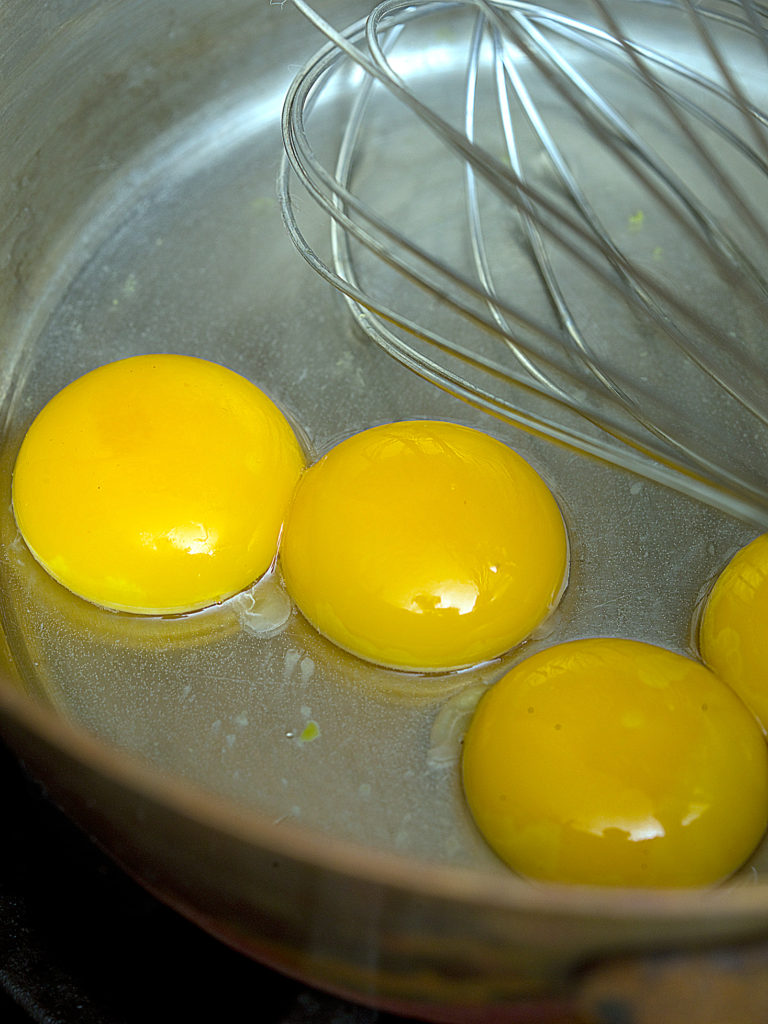
1 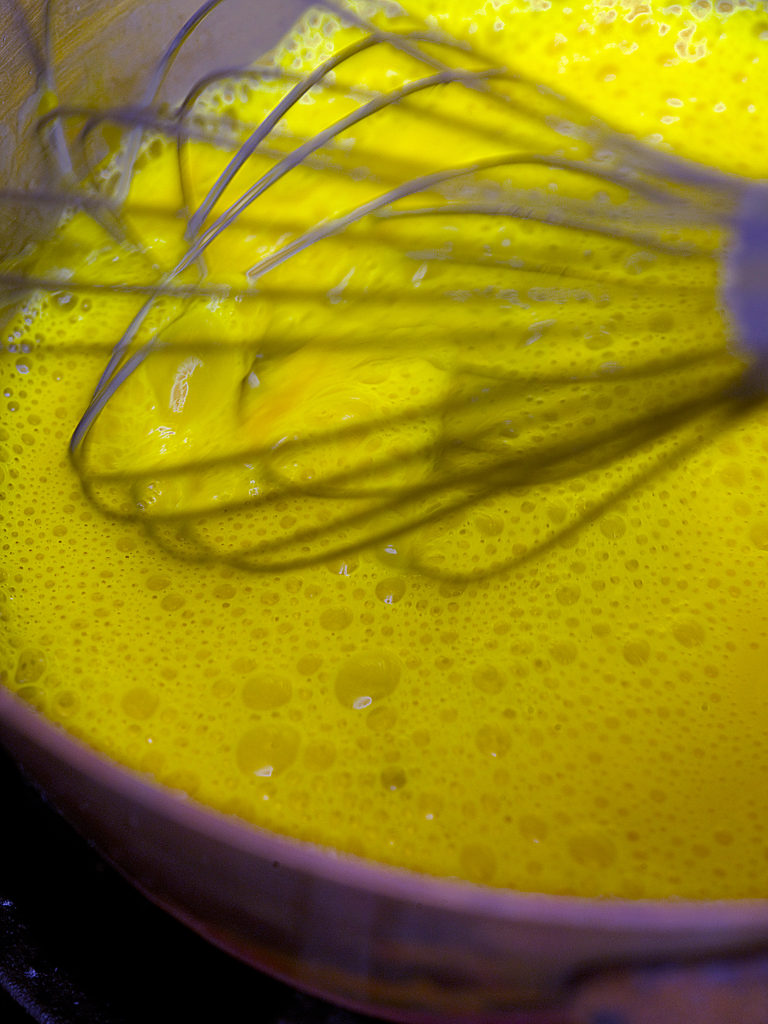
2 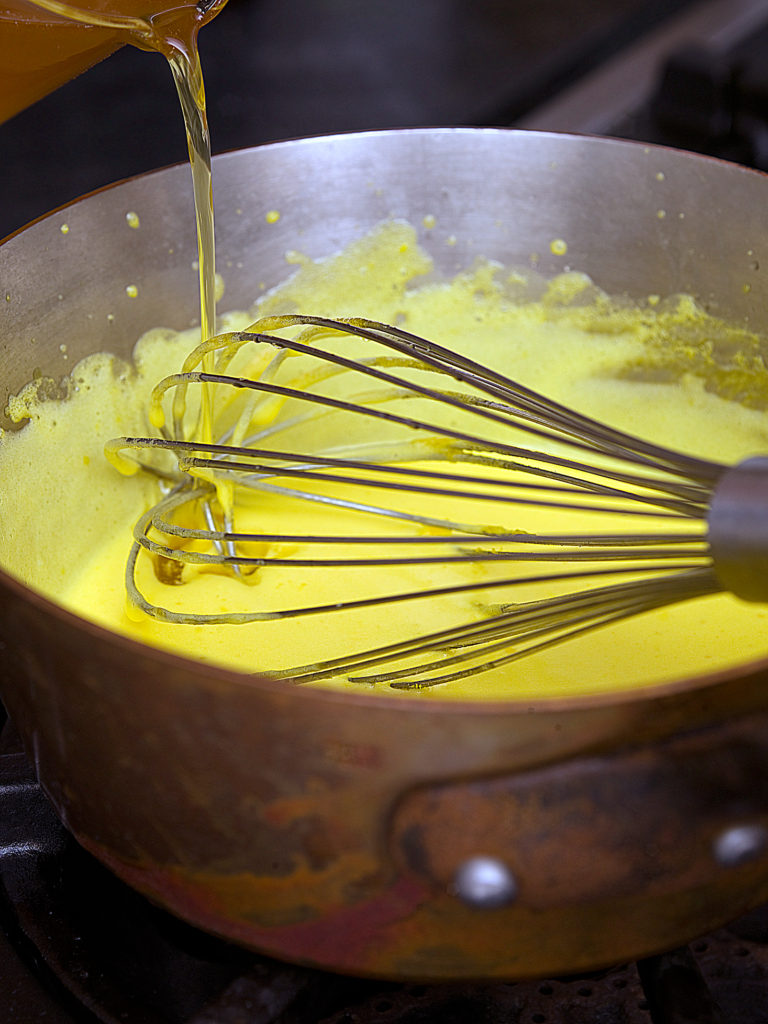
3 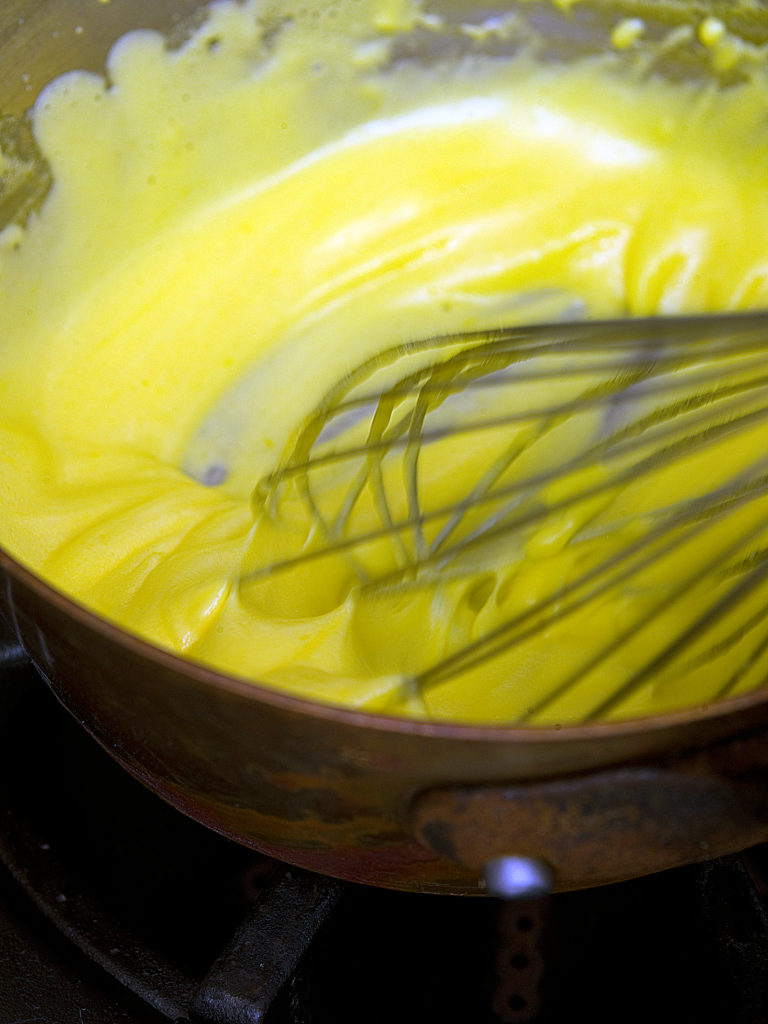
4 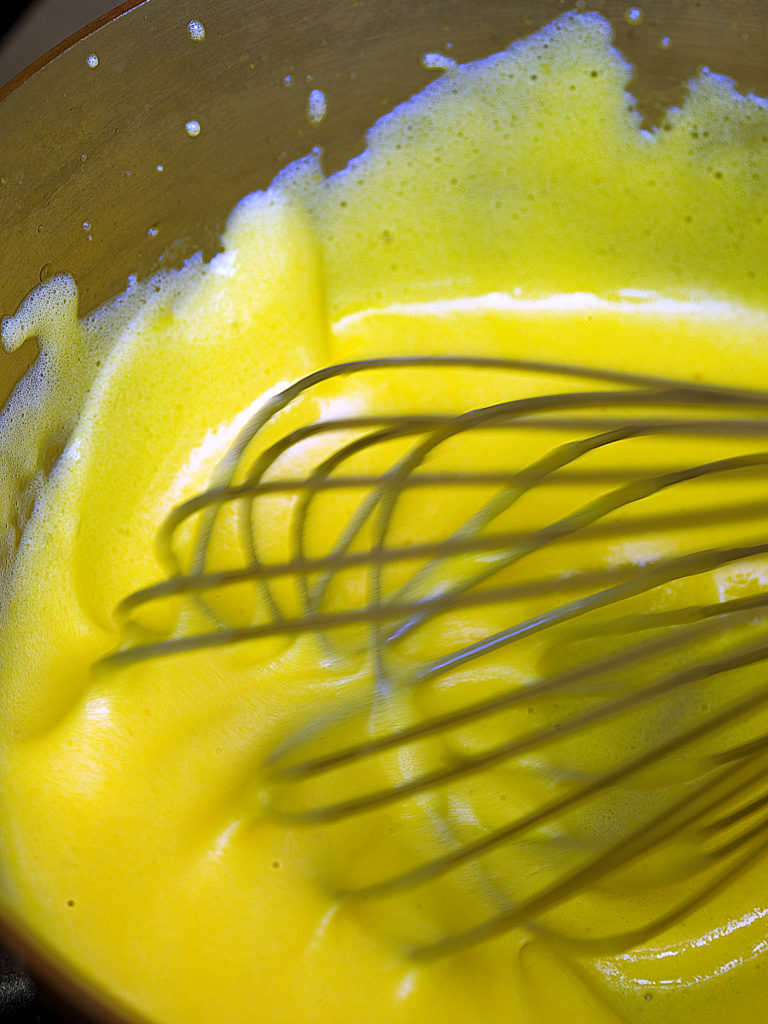
5


